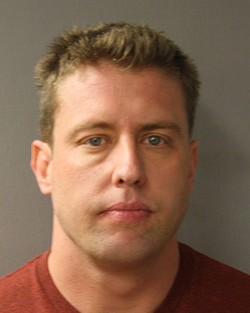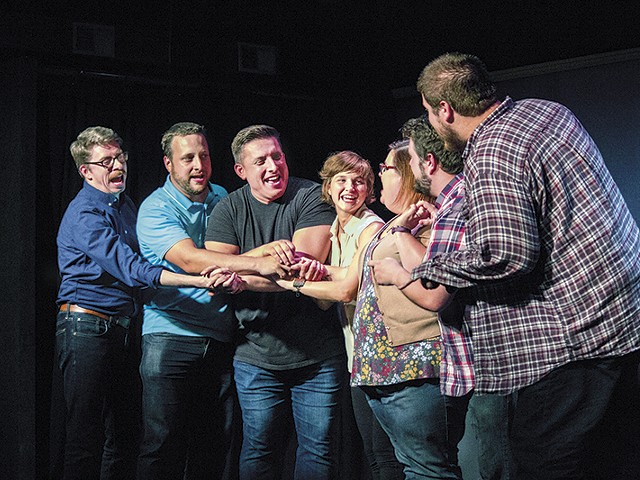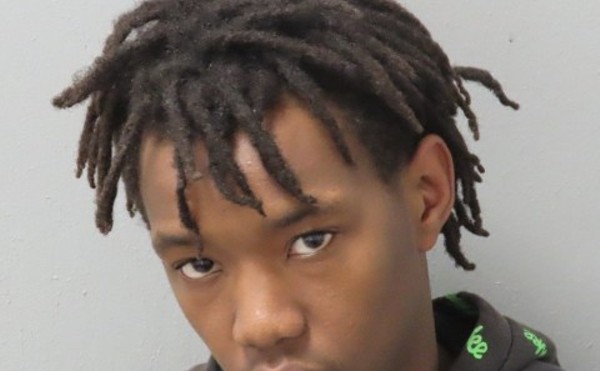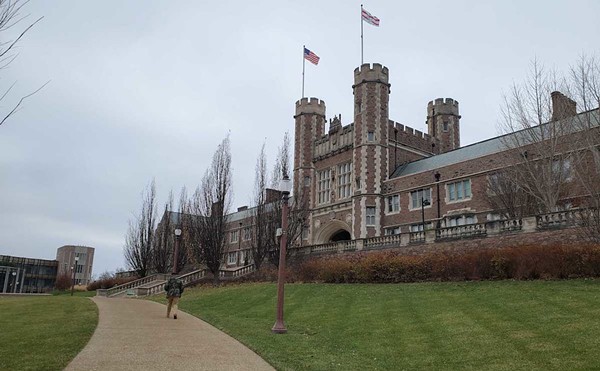
Photo by Danny Wicentowski
Prosecutor Robert Steele, first assistant circuit attorney, questioned officers on the witness stand on Wednesday.
No video clearly shows Stockley slipping the gun into the wrecked Buick driven by Anthony Lamar Smith on December 20, 2011. That day, Smith led police on a high-speed chase through north city, and prosecutors maintain Stockley "executed" the 24-year-old with a volley of five gunshots, with the final "kill shot" occurring at a distance of just six inches.
The subject of the gun and Stockley's behavior following the shooting dominated the second day of the former St. Louis police officer's murder trial Wednesday. Steele took the lead on questioning several officers who had responded to the scene of the shooting, and things got tense.

Photo via Harris County Texas Sheriff's Office
Ex-St. Louis cop Jason Stockley is on trial for first-degree murder.
"An officer who does the shooting," asked Steele, "is he supposed to get in the car with nine officers around?"
Over the course of the day's proceedings, Steele appeared annoyed at the officers' evasions and non-answers. The prosecutor also clashed frequently with Stockley's defense attorney Neil Bruntrager, who peppered Steele with objections.
"He's leading his own witness. Is it not his own witness?" Bruntrager said at one point. Steele had been questioning an officer about the video of the scene and pushing the cop to acknowledge details captured on video.
Steele's impatience with the defense attorney became evident.
"Is it not my witness?" Steele could be heard grumbling, repeating Bruntrager's objection under his breath. "Is it not my witness?"
On the day of the shooting, Stockley and his partner had chased Smith from a Church's Chicken parking lot, where they'd spotted him participating in a suspected drug deal. During the pursuit, a police dashboard recording picked up Stockley uttering what prosecutors say was a threat: "I’m going to kill this this motherfucker, don’t you know it." (Stockley's defense dispute the contents of the recording. They claim the cop never said those words.)
Three miles later, Stockley's partner, Brian Bianchi, crashed the police SUV into Smith's Buick, bringing the pursuit to an end. The police dash camera recorded Stockley approaching the driver's side window of the Buick. Seconds later, the officer fired five shots into the car.
But it was Stockley's conduct after the shooting that took center stage Wednesday. Video captured by a bystander's cellphone shows Stockley leaving the Buick and walking back to his police SUV, a circuit he repeated at least four times. The SUV's interior dashcam also showed Stockley grabbing something out of a duty bag in SUV's back seat, and while Stockley's body blocks the camera's view, prosecutors claim that this was the moment the cop placed something — the gun, they say — in his waistband.
After Smith was removed from the driver's seat — another officer testified Wednesday that Smith was still alive at this point — Stockley was permitted to enter the Buick to search for evidence.
Stockley was not wearing gloves. He exited the Buick moments later, and the designated seizing officer, John Baumgartner, then entered the Buick to recover the evidence. Baumgartner testified Wednesday that he saw an unloaded .38 revolver and three cartridges on the passenger seat, where Stockley had placed them after the search.
Under Steele's questioning, Baumgartner and several officers maintained that there was no specific policy barring Stockley from searching the vehicle. Bruntrager, Stockley's defense attorney, argued that Stockley was actually the best person to conduct the search, since he had actually seen Smith lunging for the gun. "Who better to know where things are?" Bruntrager said.
Though visibly frustrated by some officers' evasive responses — and the stream of objections from the defense — Steele managed to wrest an admission from St. Louis officer Elijah Simpson, who had been a probationary officer at the time of the shooting.
After asking Simpson to discuss best practices for a police shooting, Steele brought the questioning back to Stockley. Isn't it "strange," Steele asked, that Stockley was allowed to search the Buick himself?
"Yes," answered Simpson.
The second day of the trial also featured the beginning of expert testimony concerning forensic evidence discovered on the grip of the .38 revolver. Although prosecutors claimed during opening statements that Stockley's blood (and only Stockley's blood) was present on the gun, that claim was seemingly contradicted by police analyst Erik Hall. During his testimony, Hall said that tests he performed on the weapon did not confirm the presence of blood.
Follow Danny Wicentowski on Twitter at @D_Towski. E-mail the author at [email protected]





